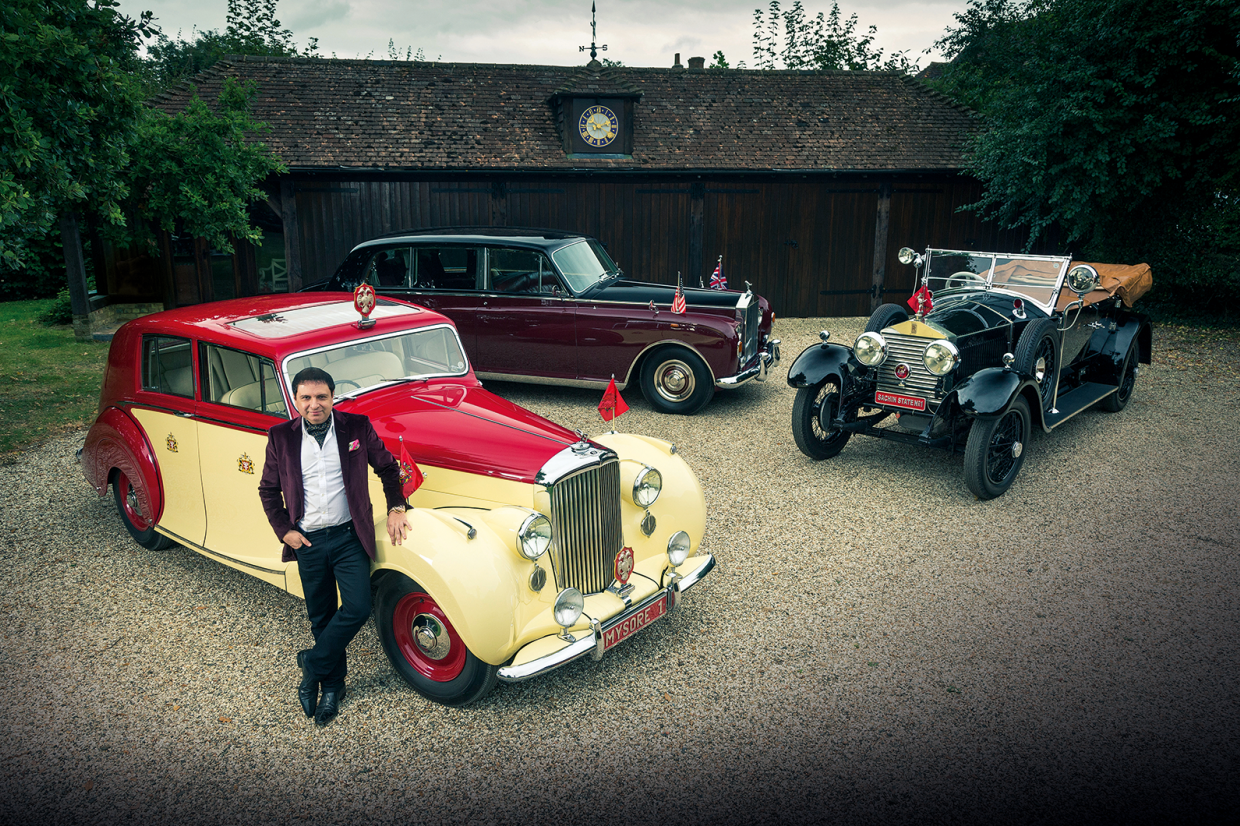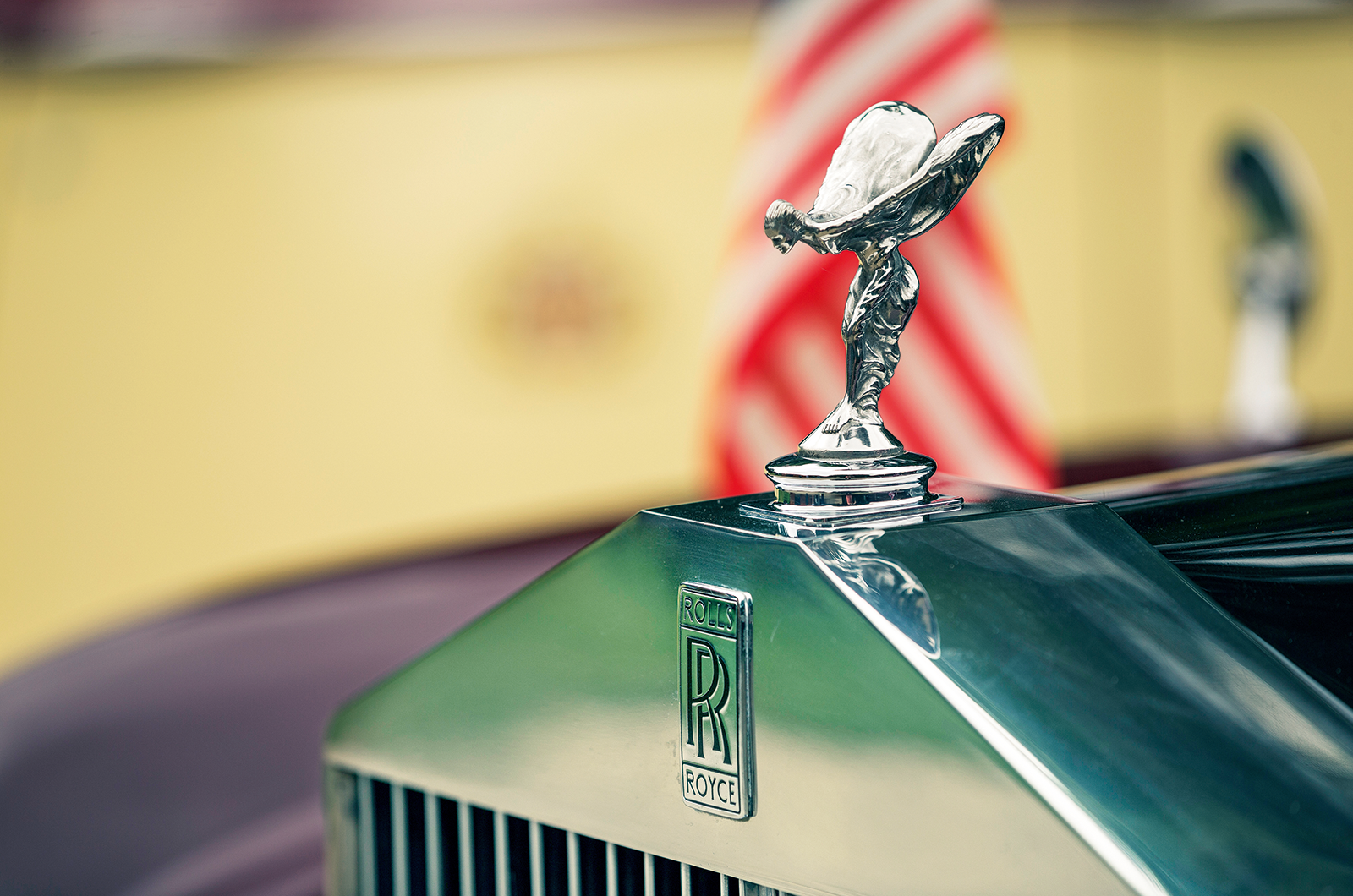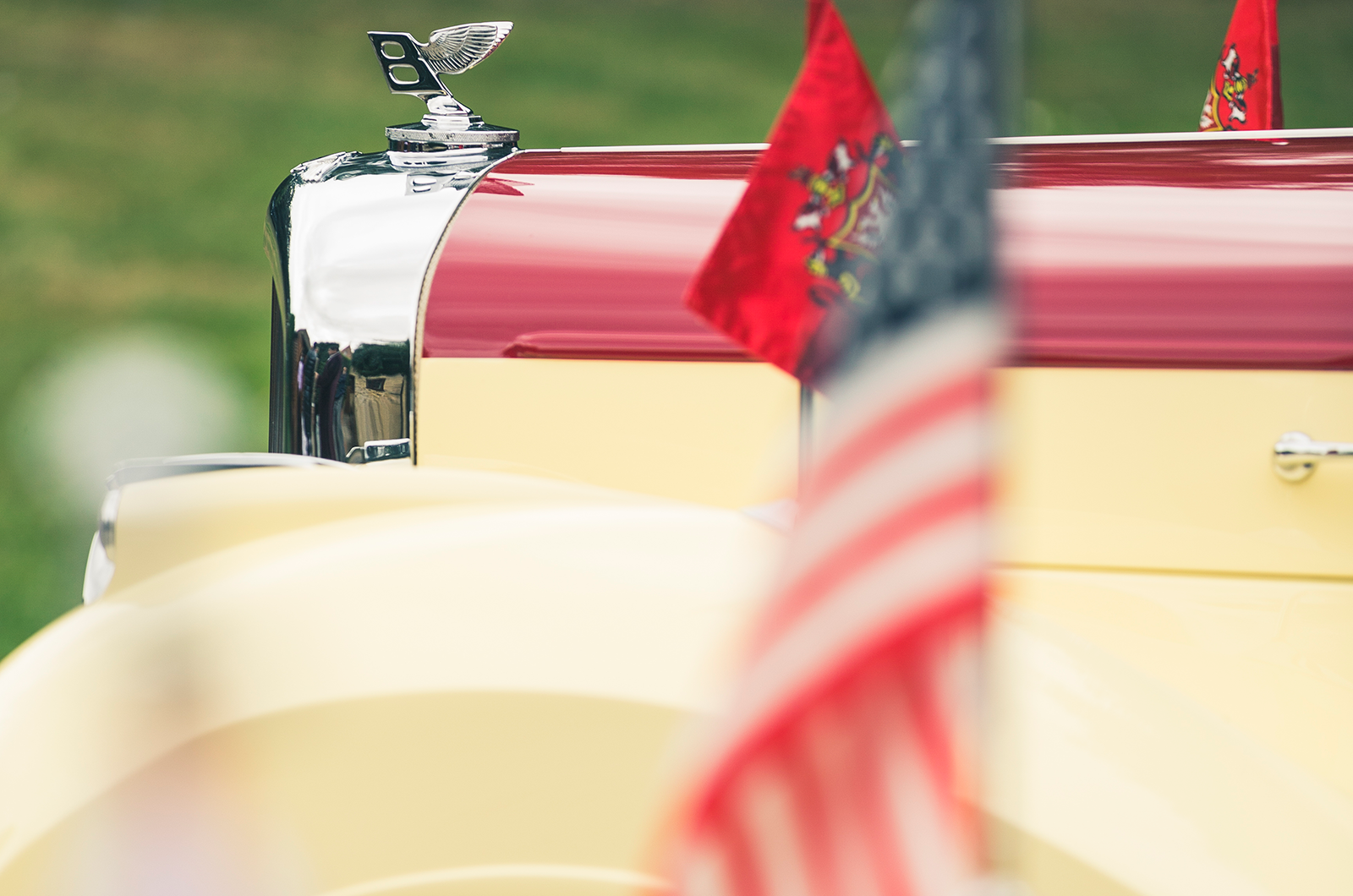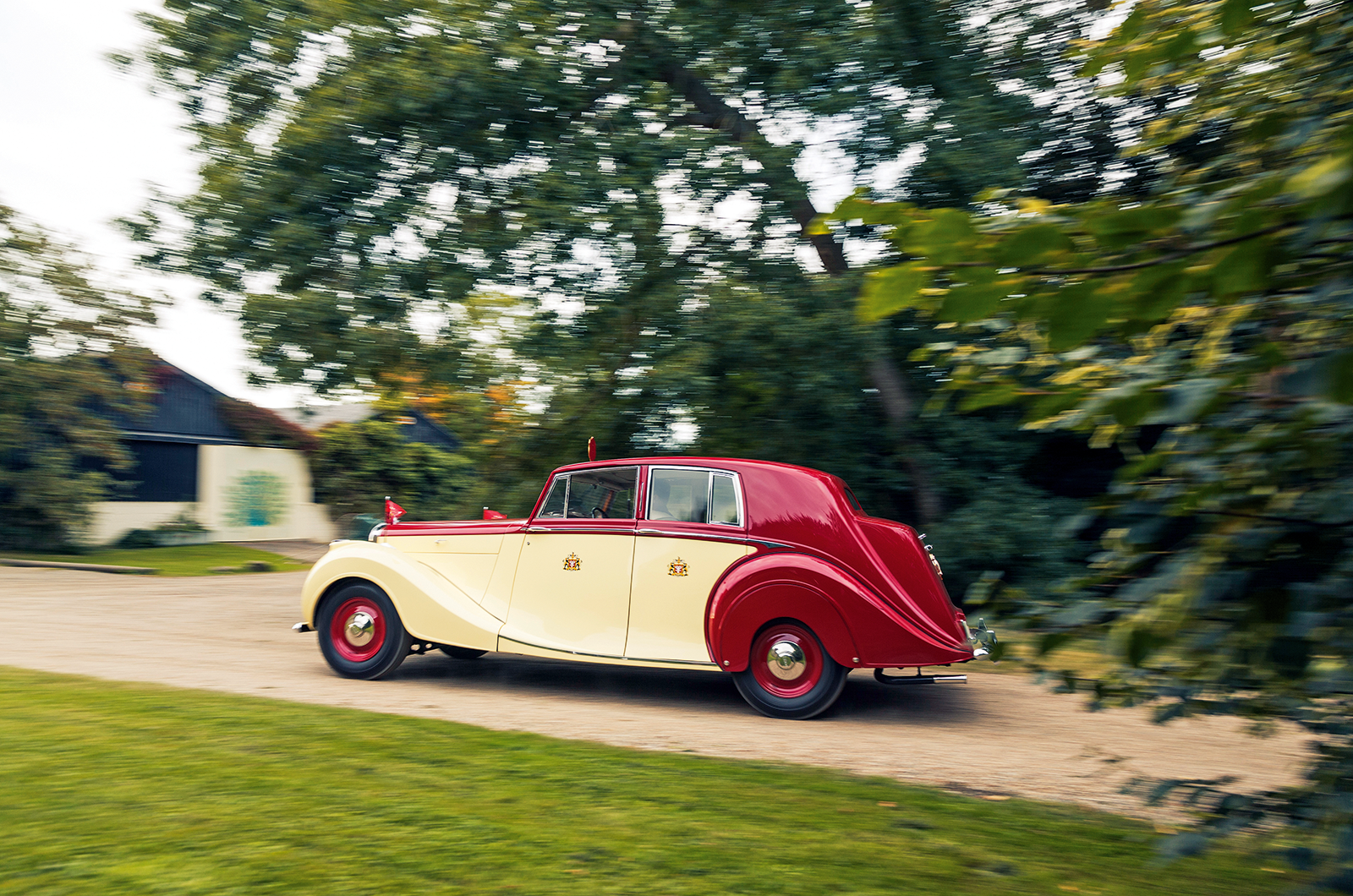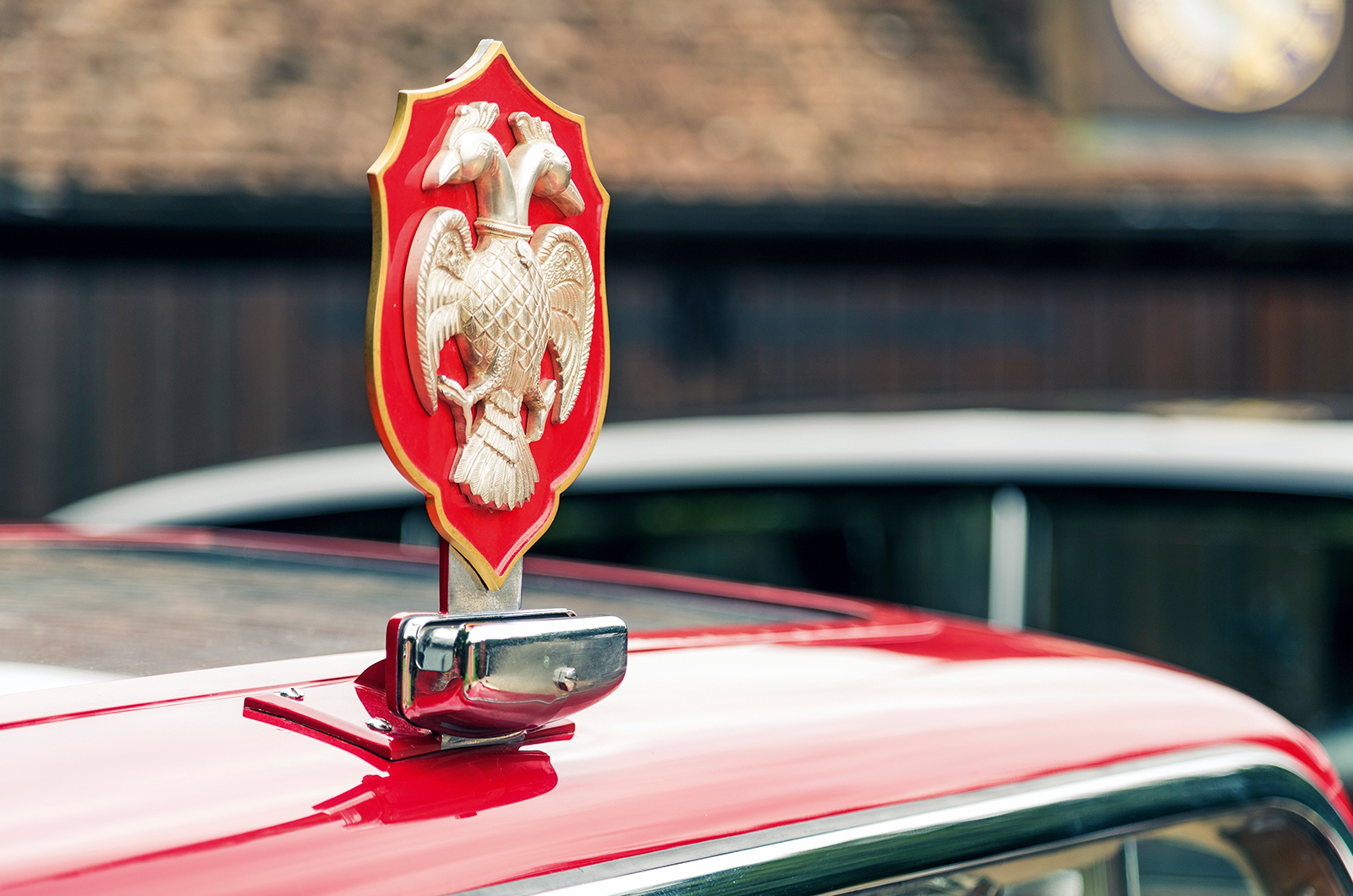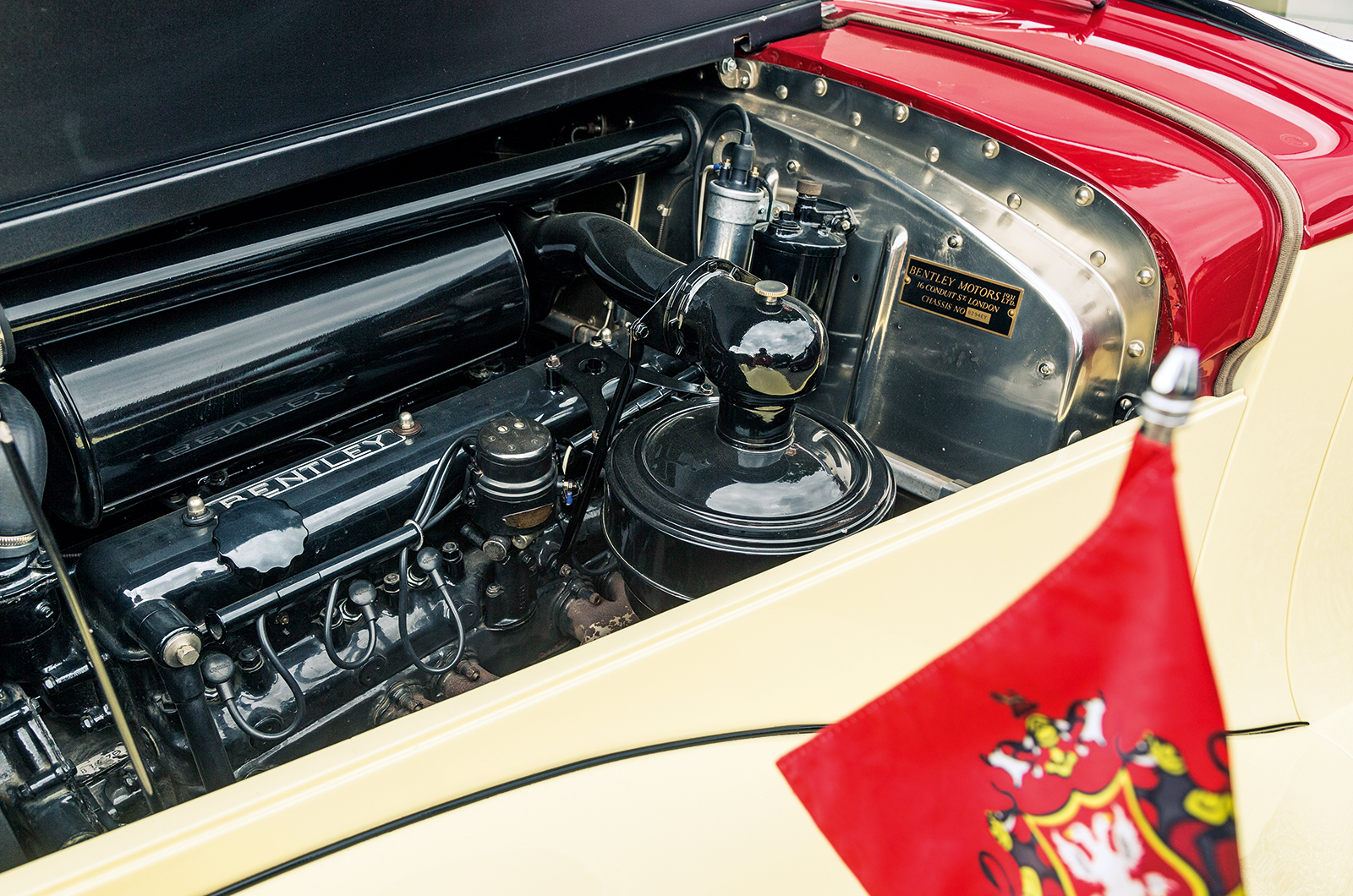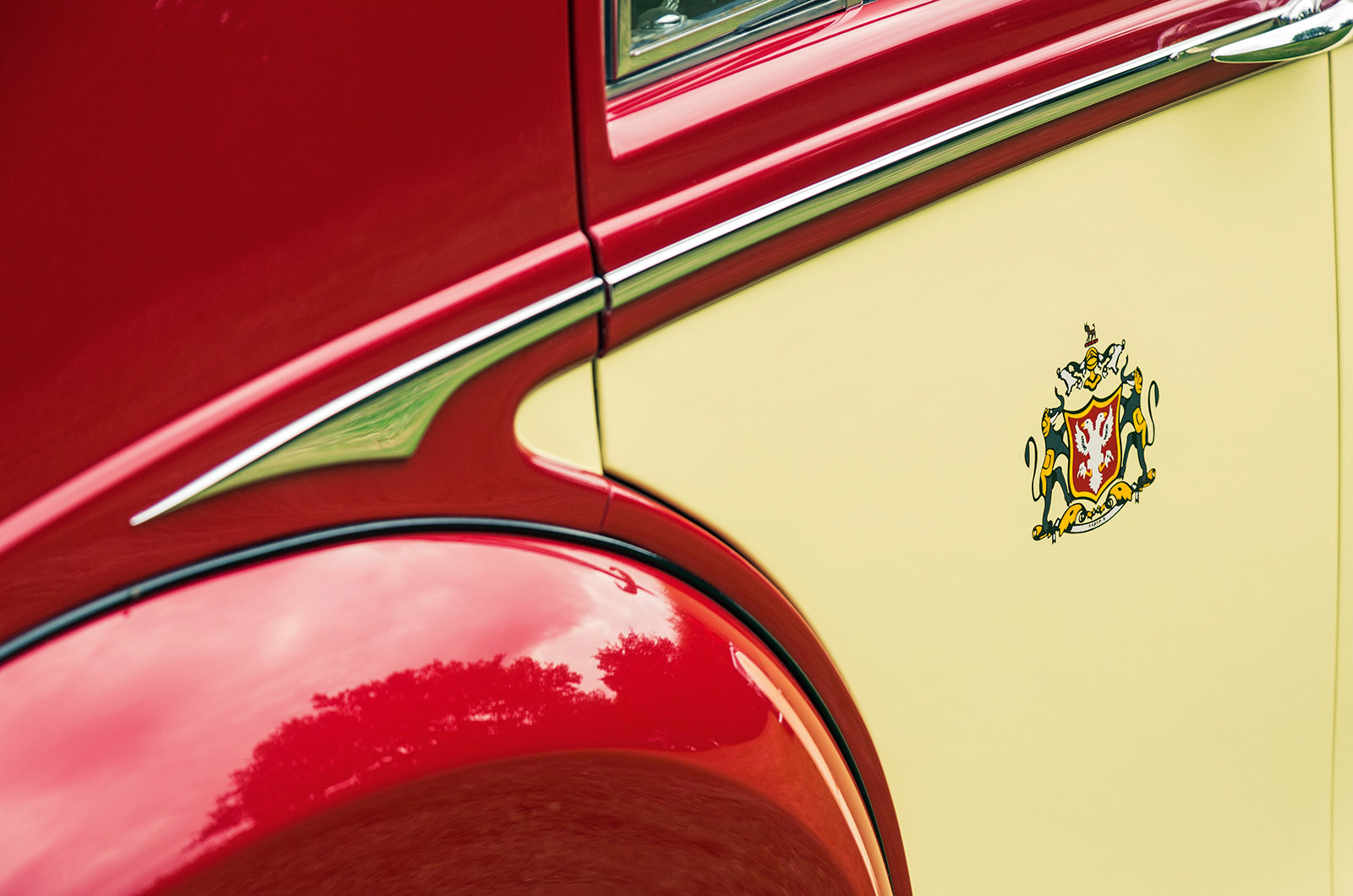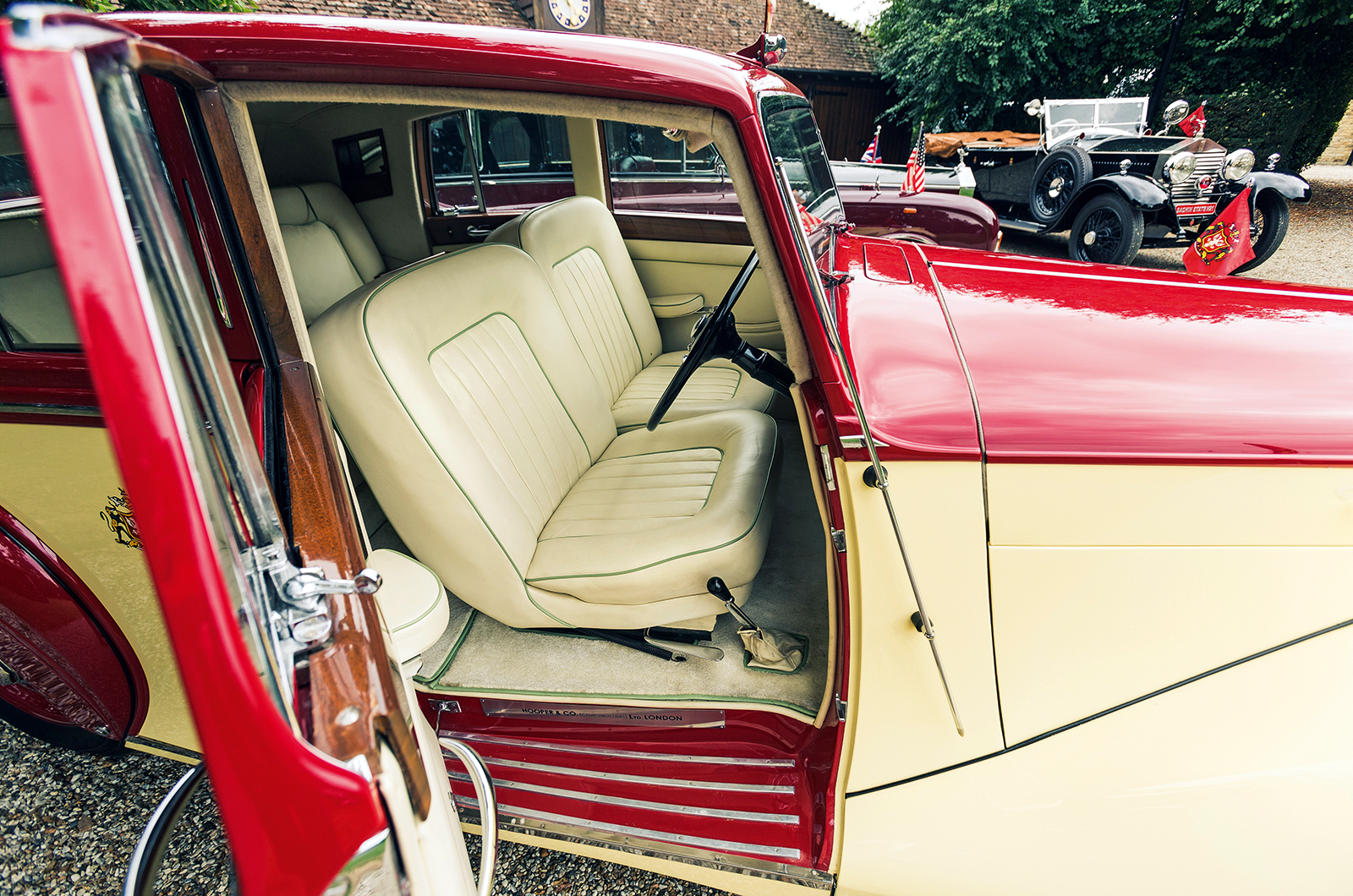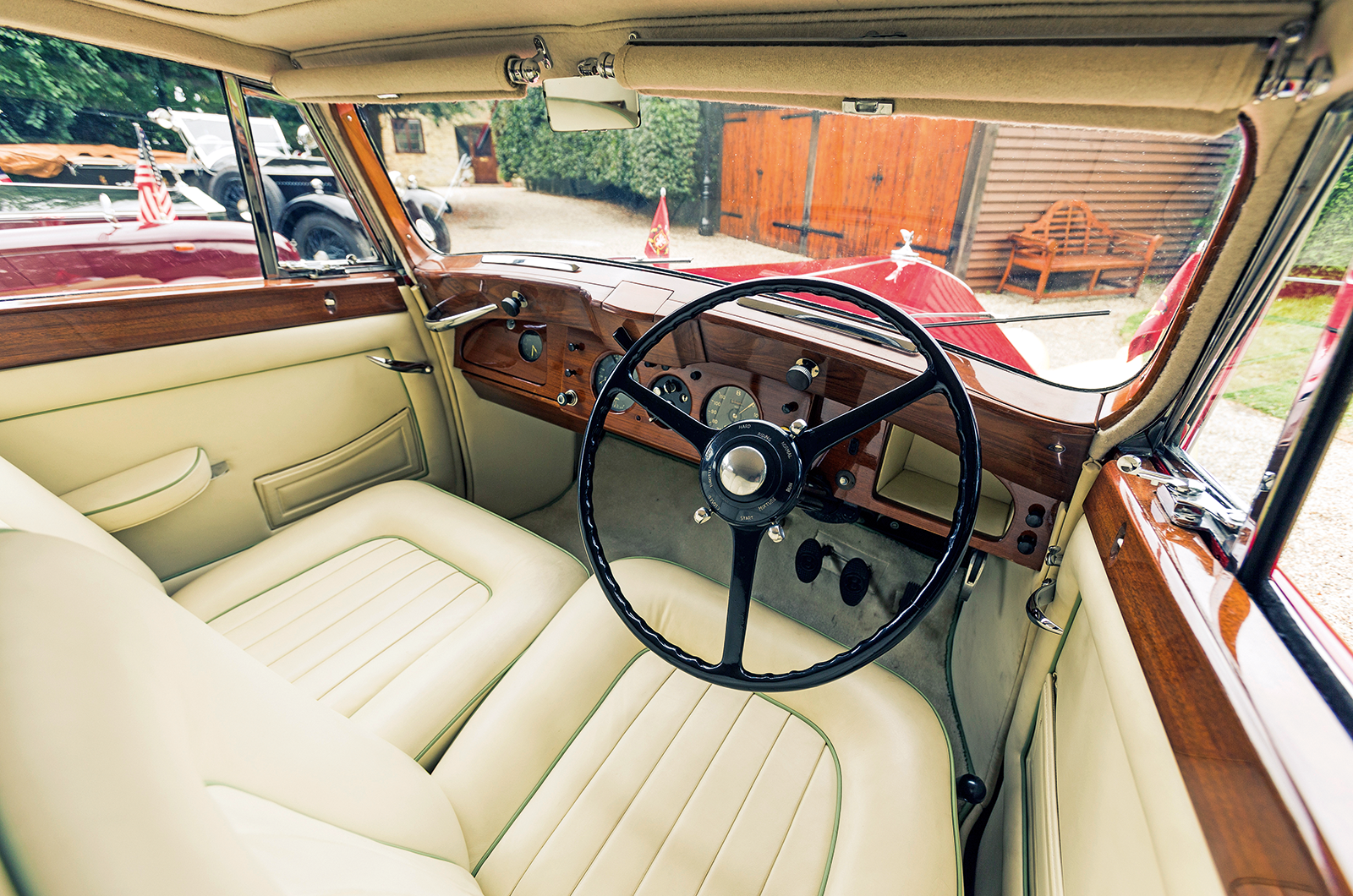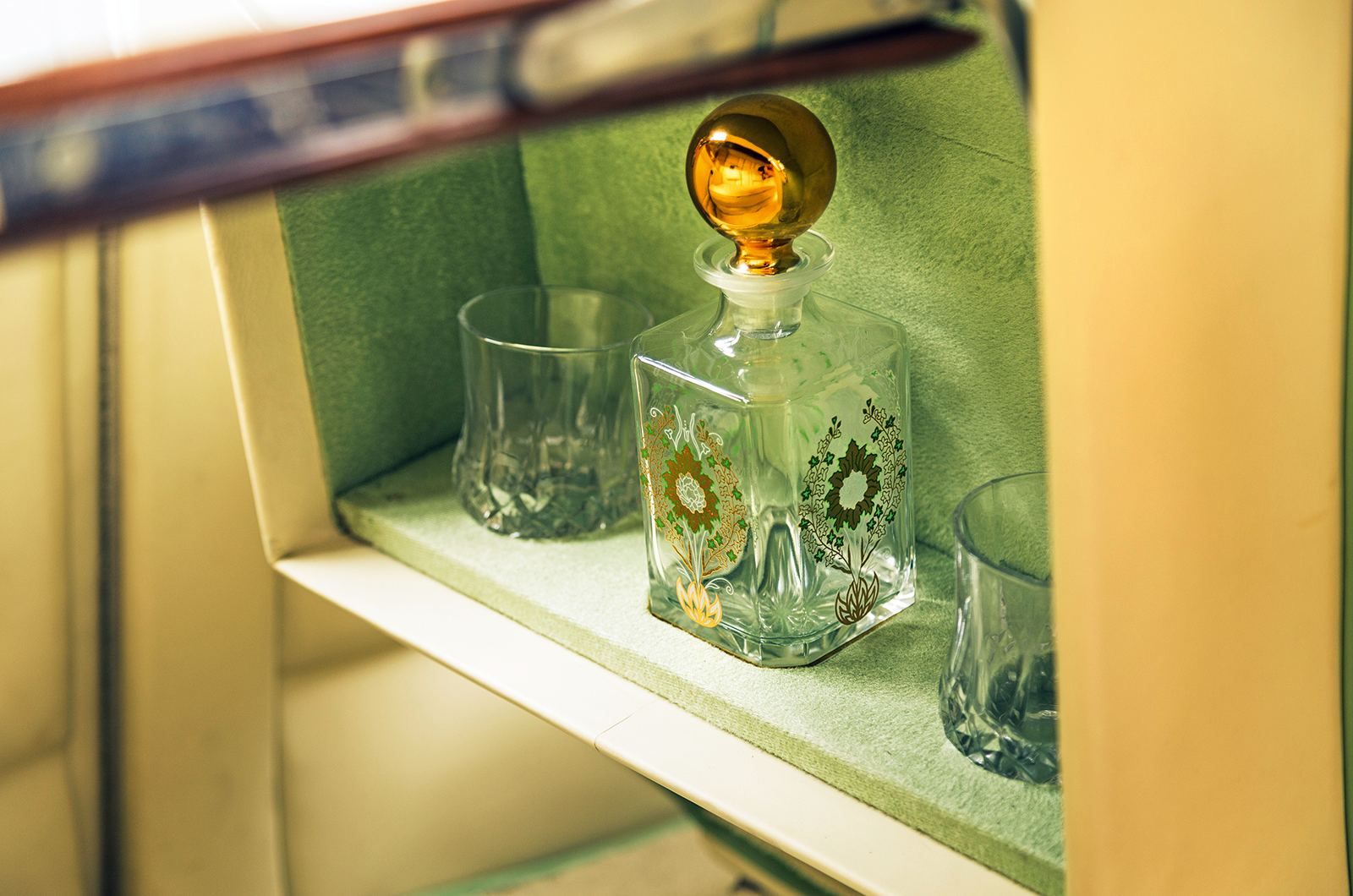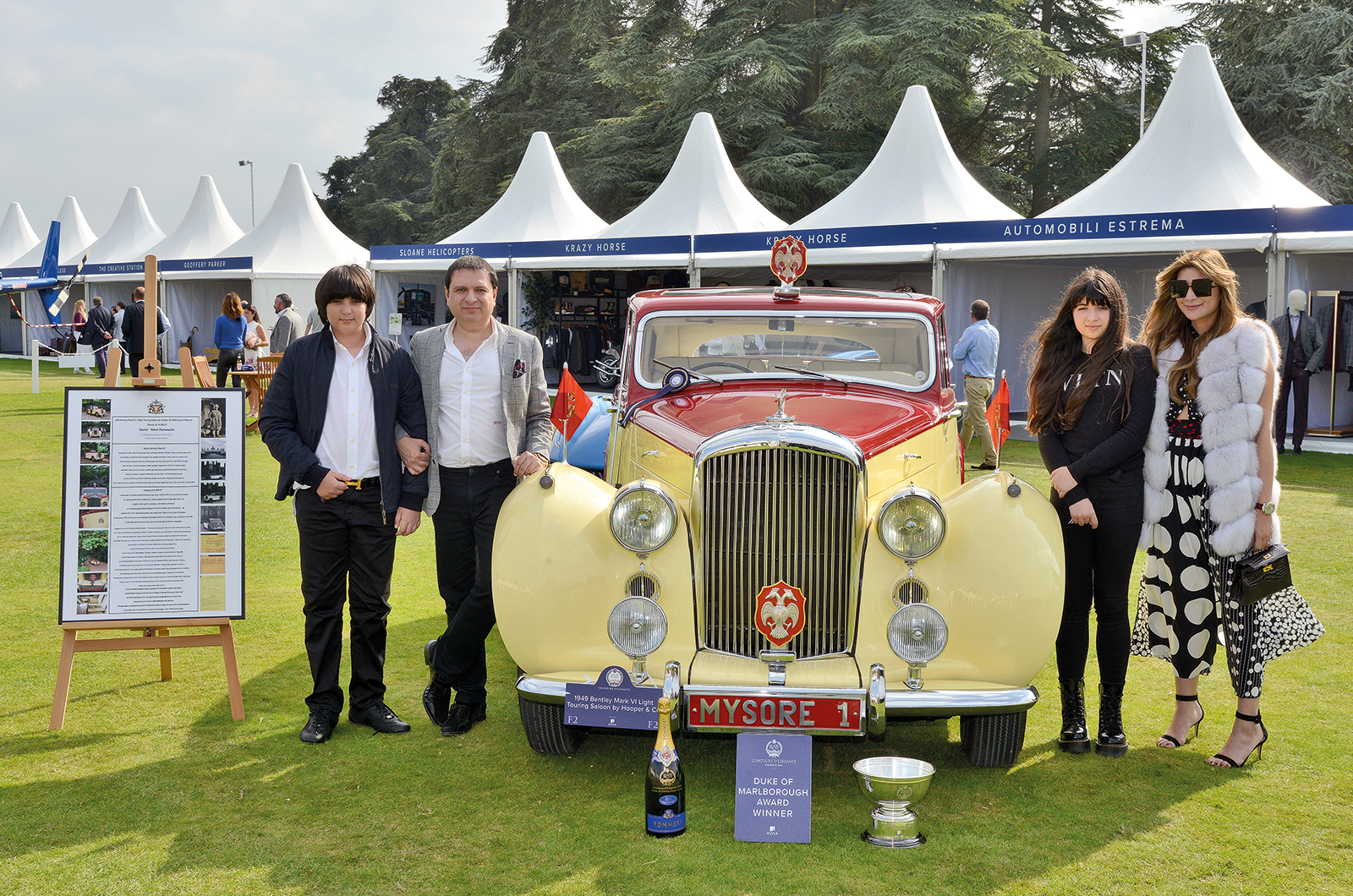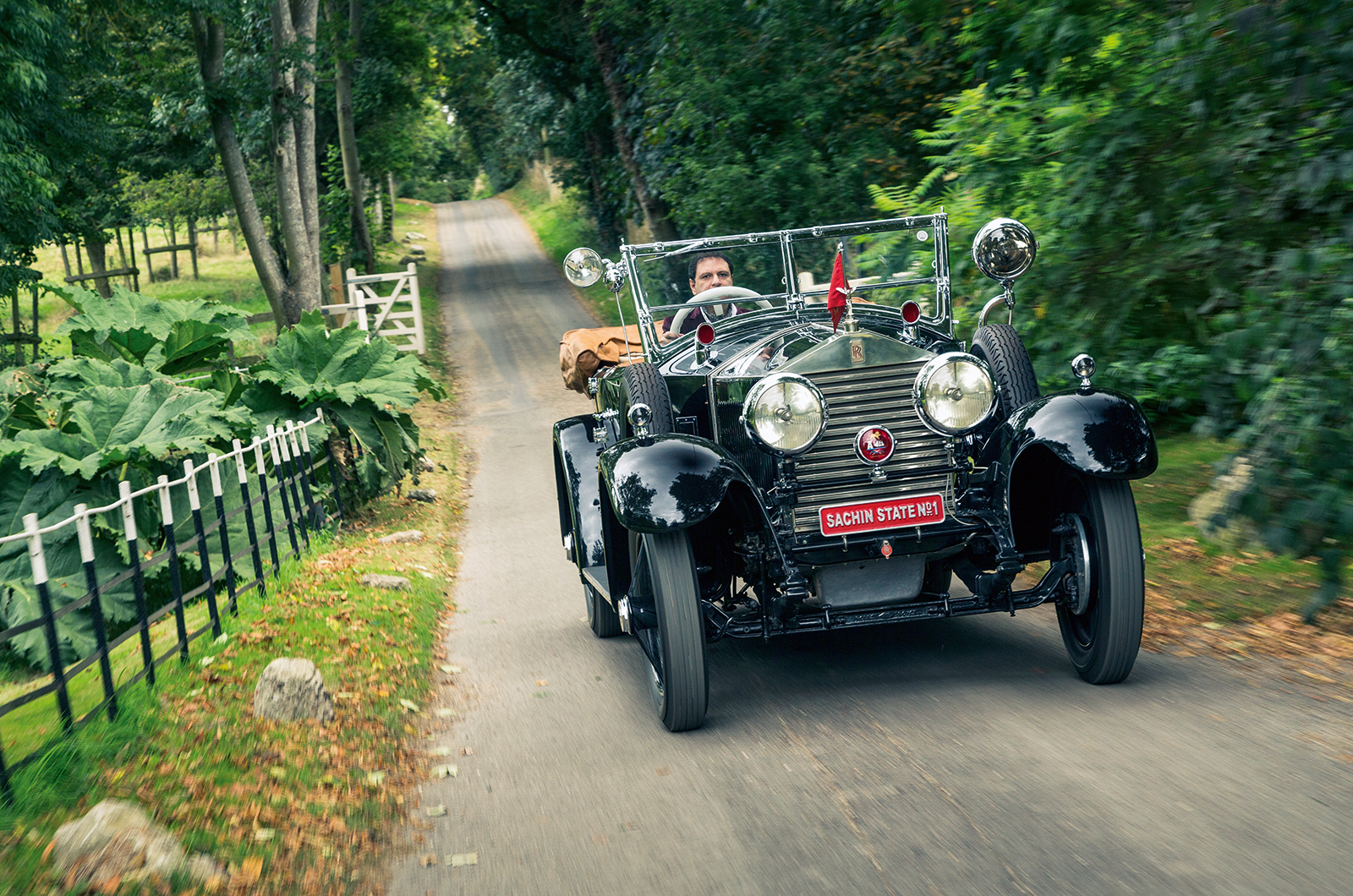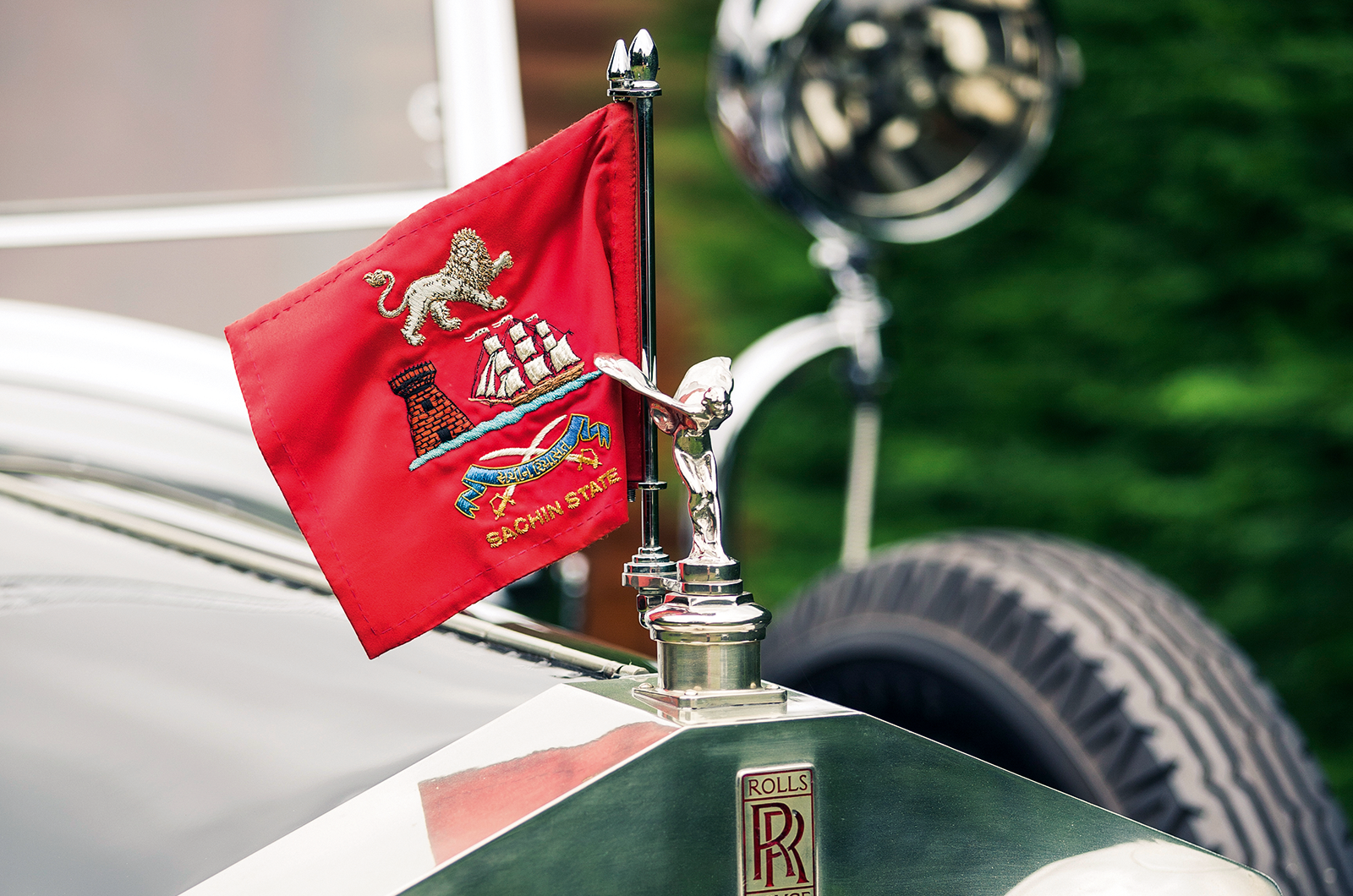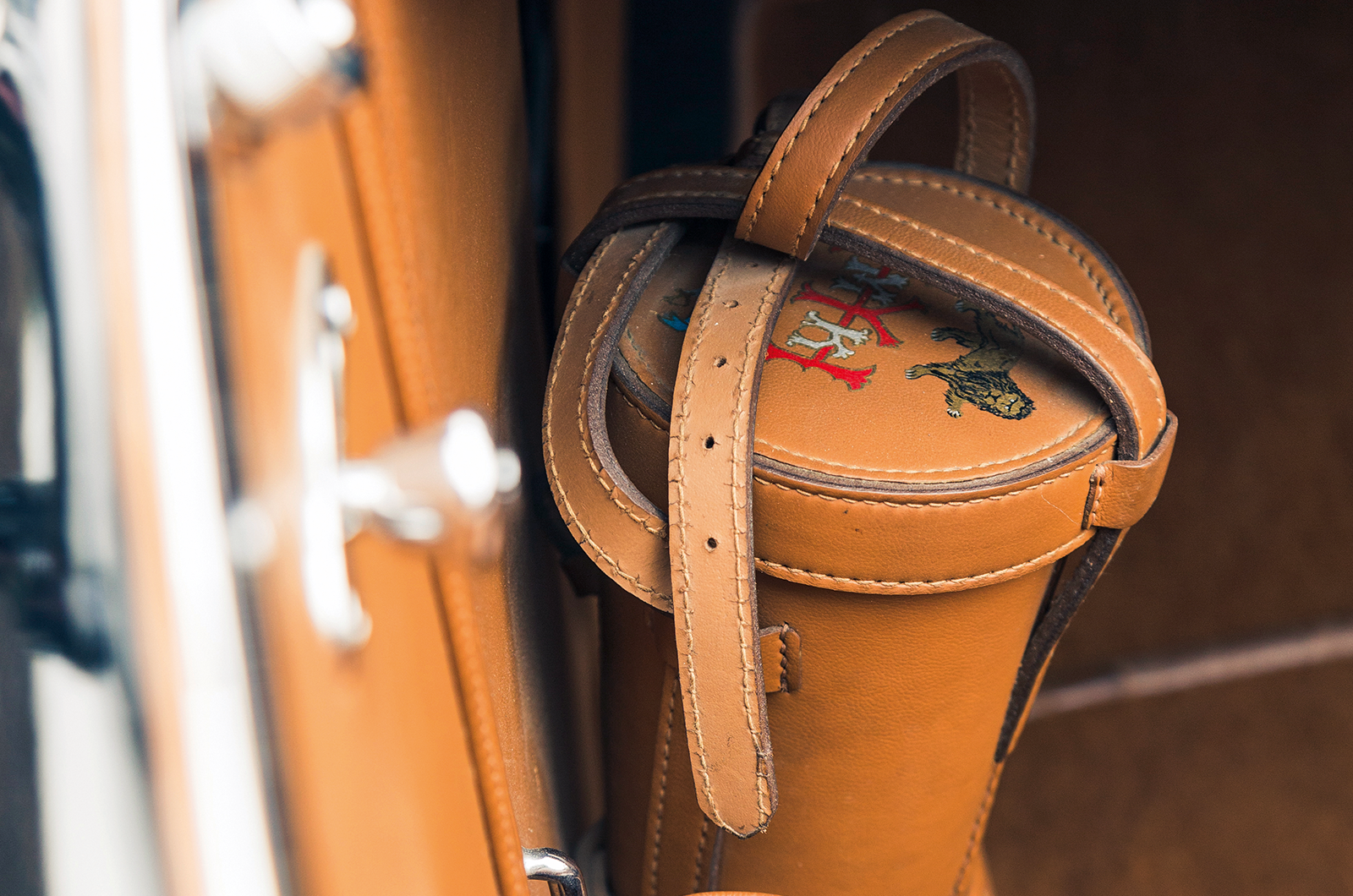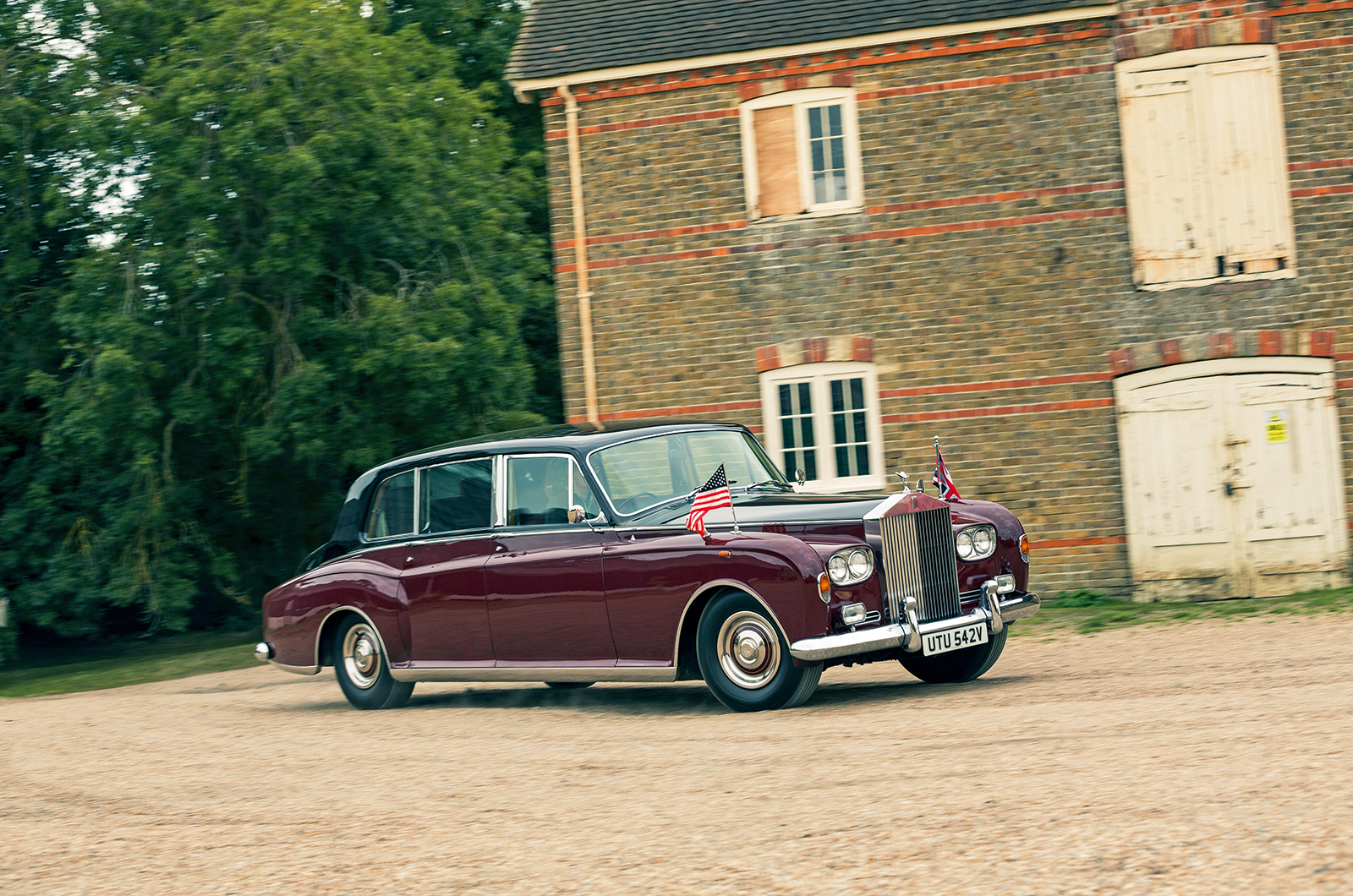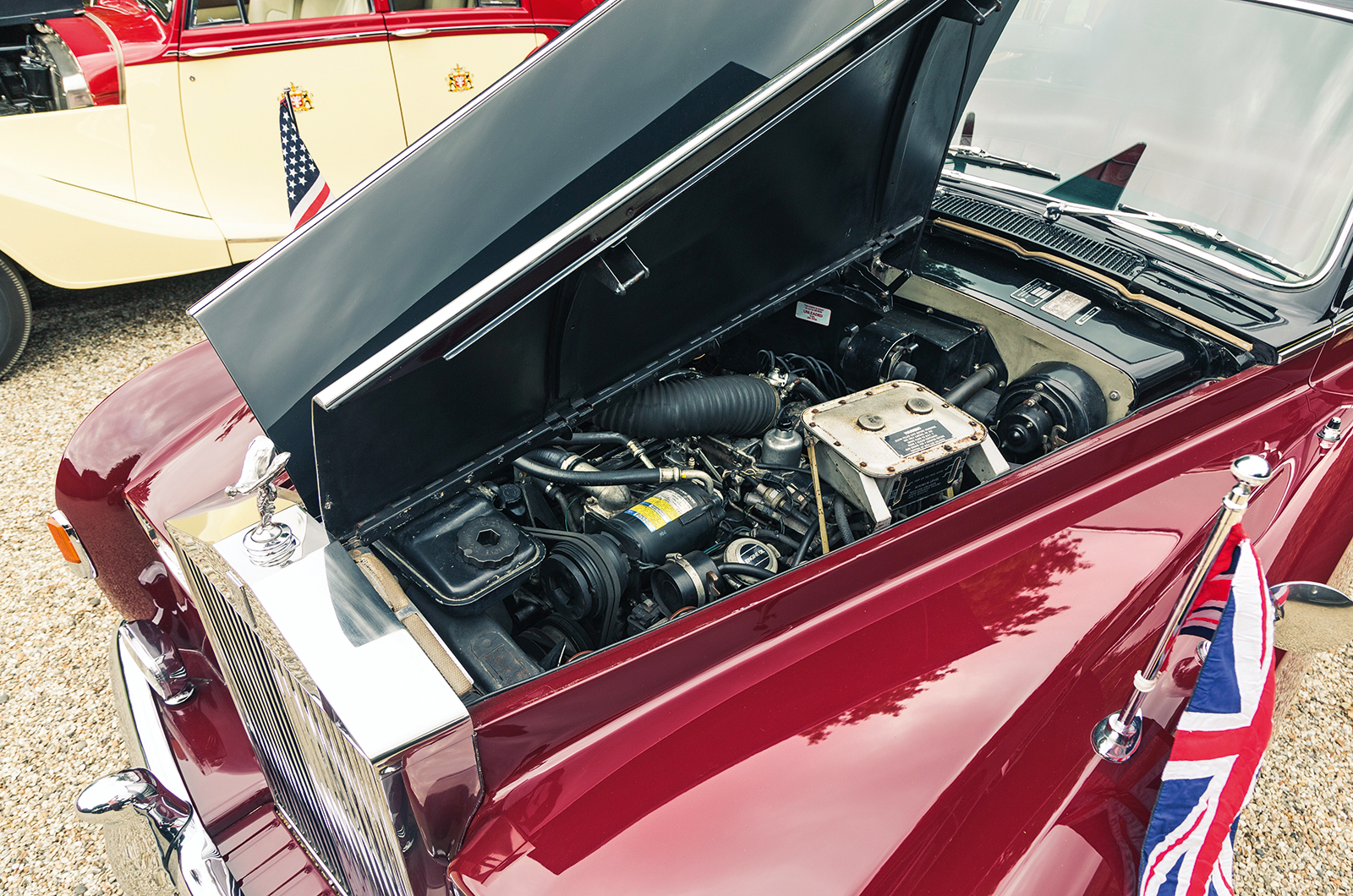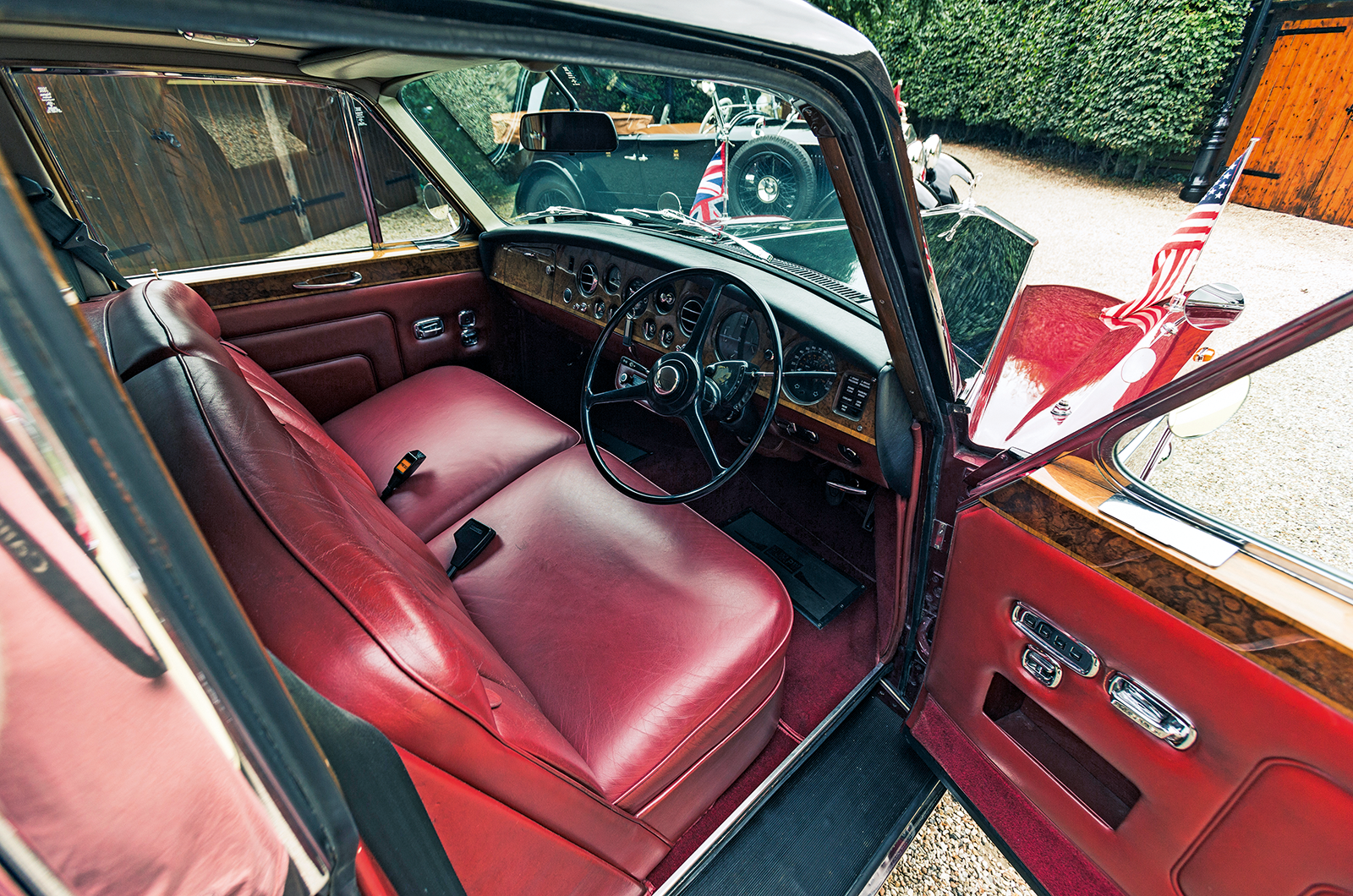By 1948 the state had become part of the Indian Union, but the family managed to hold on to the car before eventually selling it to a successful orchid cultivator, an eccentric rumoured to have kept a 2m-long rat snake in the vehicle to keep hungry rodents at bay.
The Twenty was designed to appeal to drivers; its steering wheel and controls were finished in ivory to minimise overheating in the baking Indian sunshine
Despite the dazzling paintwork of the Bentley, it’s the pre-war Rolls-Royce that first catches your attention.
Finished in jet black, the Barker-bodied open tourer simply shimmers, with countless chromed parts that twinkle in the sun – many of which were painstakingly sourced when the car was restored by its former owner, also a renowned collector.
The work took the best part of two and half years and included the fitment of twin Stephen Grebel headlights, plus a pair of Grebel spotlights – one mounted on the front of the car, with a second hunting light operated by the driver and arranged to the side of the dual windscreen.
Given India’s road network in the 1930s, the addition of a third spare wheel is a sensible upgrade, while inside a number of modifications were made to adapt the Royce to the hotter climate.
The 1979 Phantom VI served as a company showcase; it has also been used by Queen Elizabeth II
The steering wheel, gearlever, Barker headlight-dipping lever and dashboard control knobs – anything that might have been touched during the car’s normal operation – are finished in an ivory colour to reflect the sun and remain as cool as possible.
The nickel-plated dials, meanwhile, are faced in black, so as not to dazzle the driver.
A lifelong love affair with Phantoms, both vintage and modern, has led Poonawalla to assemble a collection that includes Sir Malcolm Campbell’s 1933 Phantom II and the Maharaja of Panchkote’s 1937 Phantom III, so it’s fitting that he has recently managed to acquire an example of the last model built before the firm’s takeover – the ultimate Phantom.
It’s difficult to comprehend just how vast the 1979 Phantom VI is until it hoves into view, dwarfing the other two cars from Poonawalla’s collection; it reminds me of standing on the quay as a cruise ship draws alongside.
The mighty Phantom VI is propelled by a 6.75-litre V8
Where the other cars in the collection serve a duality of roles for the owner-driver, the 6.75-litre V8-engined Phantom was built with the sole purpose of transporting heads of state.
As the company’s official demonstrator, chassis PGH 116 was fitted with every conceivable luxury and extra, ranging from reading lights and headrests to curtains and cocktail cabinets.
“It was the flagship of the fleet, built to the highest specification,” explains Poonawalla.
“It has electric seats, velvet upholstery and cushions, air conditioning and a glass division for when you don’t want to be heard.”
The Phantom is equipped with every extra imaginable, as befits its status as a flagship for the brand
Such levels of comfort and privacy were vital to one of the car’s regular occupants.
Though it remained with Rolls-Royce and later Bentley until being bought by Poonawalla, the Phantom was often loaned to the royal family and served as a state car for Her Majesty Queen Elizabeth II on a number of occasions, most notably while on a visit to Sweden in 1983.
During the trip, royal standards were flown from each front wing, while the usual numberplate was replaced by one bearing the registration HMQ 001.
The Poonawalla collection is already impressive but it continues to grow, with recent additions including a Rolls-Royce Silver Cloud with government connections and a 1964 Lincoln Continental that was used by the Pope: “The Silver Cloud represented a grand opportunity because it was used by the President of India, while the Lincoln was specially imported by the Vatican before being gifted to Mother Teresa and auctioned for her leprosy charity.”
Yohan Poonawalla hopes his cars will make a Pebble Beach appearance in the future
And while expansion forms a large part of Poonawalla’s ambition, so does sharing the cars at the highest level; you can’t help but wonder if Pebble Beach will eventually be on the cards.
“Sooner rather than later,” he smiles.
Images: Luc Lacey
Thanks to Mohammed Luqman Ali Khan; Terence Morley
READ MORE
Reliving an epic, 8000-mile adventure across India by Rolls-Royce
The story of Bentley: from Blowers to Speed 8 and beyond
Continental shift: driving the Lincoln Continental
Greg MacLeman
Greg MacLeman is a contributor to and former Features Editor of Classic & Sports Car, and drives a restored and uprated 1974 Triumph 2500TC
